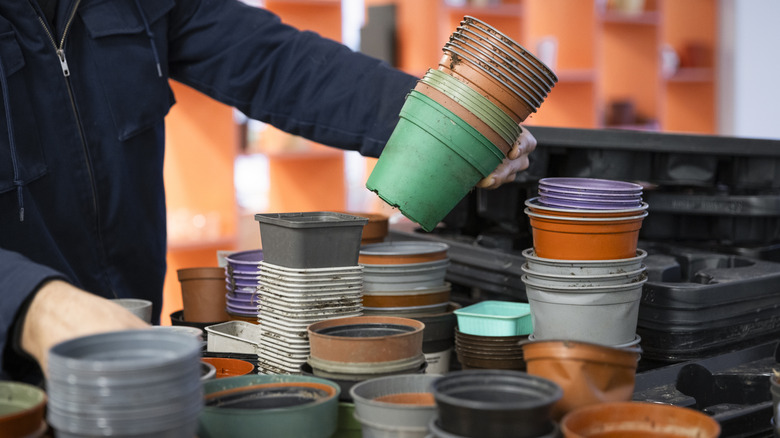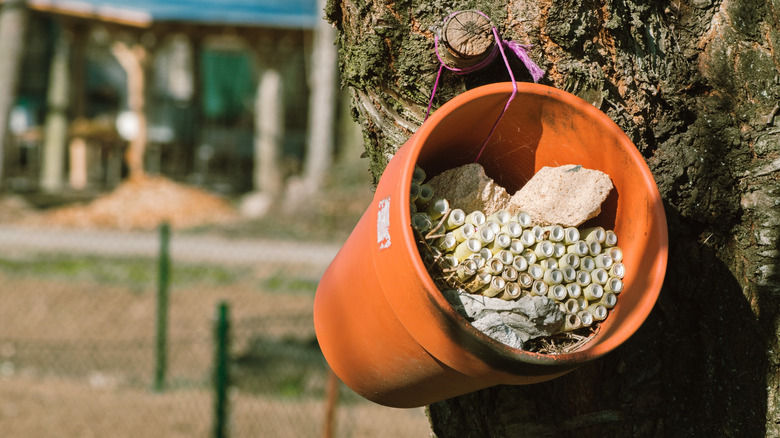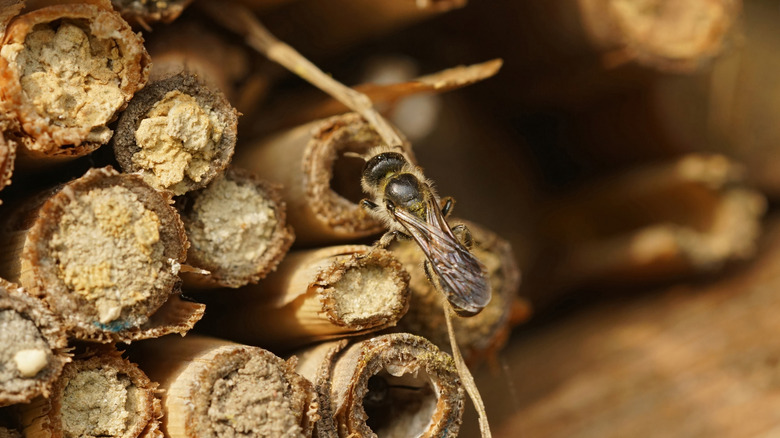Save Your Plastic Nursery Pots For A DIY That'll Make Your Garden A Pollinator Haven
We may receive a commission on purchases made from links.
The empty plastic nursery pots that are piling up in your garage can easily be repurposed into an eco-friendly home for pollinators with just a little creativity and a few materials. Transforming them into small insect hotels gives bees, ladybugs, and other beneficial bugs a safe place to shelter while keeping the plastic waste out of landfills. These hotels work by replicating the natural nooks and crannies where insects typically hide. You'll only need a few basic supplies to get started: clean plastic nursery pots, natural materials like bamboo sticks or pinecones, a small drill for ventilation holes (scissors could also work if the pots aren't too thick), and twine or zip ties for assembly.
There are plenty of good bugs that will chase pests out of your garden, and the way you set up your pots can help determine what kinds of bugs nest inside. Smaller pots can be filled with hollow stems to attract solitary bees, or you could make the perfect spot for beetles from larger pots when they're packed with dead wood. Place your finished hotels near flowering plants where pollinators are generally more active. This project should only take around an hour to complete and will help give new purpose to containers that would normally just be thrown away.
From empty pots to insect sanctuaries
You'll need to start by preparing your plastic pots. They likely already have drainage holes in the bottom, but add holes to the sides to help with ventilation and drainage. If you plan to hang them up, you'll want to also create two holes near the rim and thread some twine or fishing line through. Next, gather your natural materials and prep them for your hotel. Cut bamboo and sticks into smaller segments to fit the pot, bundle together dried hollow stems with twine, or create layers using pinecones, wood scraps, and rolled up cardboard. The whole point is to provide various textures and holes to attract different species.
Once prepped, assemble your hotel by tightly packing materials into each pot, filling any holes with leaf litter. Your little insect hotels are now ready to accept visitors. Hang your creations in a sheltered spot on their side facing the morning sun, preferably 5 or more feet off the ground. You can help maintain your hotels by replacing damp materials and gently cleaning the outside of the pots seasonally. Within weeks, you should have no problem bringing more pollinators into your yard.
Attract specific bugs with strategic materials
The materials you choose for your repurposed pots will help determine which insects decide to take up residence. Hollow bamboo stalks or paper straws create ideal nesting tunnels for solitary bees. Centipedes and beetles thrive in spaces filled with rotting wood chips or bark, which replicates forest floor conditions and helps break down organic matter. For natural pest control, corrugated cardboard or wood pieces help attract lacewings, who love snacking on garden pests, while pinecones and twig bundles provide hibernation spots for ladybugs, who eat aphids.
Be sure to avoid treated woods or synthetic fibers, as natural materials will ensure safety for both the insects and your garden's ecosystem. Also, if you're using multiple hotels, try keeping the moisture-rich ones closer to the ground to attract and shelter amphibians. Add rocks and stones to these hotels. Of all the easy ways to bring good insects into your garden, this is one of the most creative. Keeping track of what kind of insects are visiting your hotels can help you decide what materials to choose in the future or if you should favor more of one type over another.


